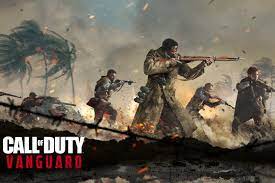
The MMR is a match making system that places players of equal skill level together in a ranked competitive mode, as opposed to casual where it will place them with players of varying skill levels. It works on a hidden numerical value assigned to each player (MMR). To determine the MMR, the system takes into account many factors, such as a player’s performance against opponents of a certain skill level and how long they have been playing. The MMR has a tendency to rise/fall depending on your win or loss rate.
If you want the best chance at matching with players around your own skill level, aim for a rating midway between 0 and 1000, where you win 50% of your games.
MMR is short for Match Making Rating and it’s a system used in many online games to match players of similar skill levels together in game modes like ranked queues. The MMR system in Valorant is very similar to others, using the Glicko algorithm which will be explained in great detail below.
To start it works by setting your base Elo (what we call “level”) at 1000 and then adjusting it after each match based on whether you won or lost. The Elo system’s original purpose is for its simplicity in being able to follow only wins/losses, but also advanced enough to include draws and adjust player ratings accordingly. This type of system is called a Bayesian ranking system.
This Elo value goes up or down depending on several factors, including your performance against an opponent (how much more powerful he is than you) and how long the match took. The MMR system in Valorant is very similar to others, using the Glicko algorithm that calculates ratings for players based on their performance against other players.
All this means you will be matched with people of a similar skill level to your own, whether it’s someone who is brand new to the game or a Diamond player.
However, there is a twist with how Valorant handles MMR values. Since you gain access to more Champions as you level up, your own personal MMR value does not stay static! It will change depending on which Champion you play and also when your play that Champion relative to others. This means that if you are playing Valorant at a time when nobody else is playing your Champion, your MMR will go down.
Also note that not all Champions move together in MMR values; for example, some Champions will actually cause the MMR of other Champions to decrease or increase (although it’s rare). You can see on our Leaderboard what the average MMR of each Champion is at any given time, so you can get a rough estimate of what your personal MMR value should be when playing that Champion.
Another important factor in determining your MMR is something we call “relative Elo”. This means that not only will you have an absolute Elo assigned to you after each match, but it will be set in comparison to the average Elo of everyone you’ve recently played with or against. This is what we call your “relative Elo”.
How does mmr work in valorant?
The above content is a guide to match making in Valorant. It explains how it works and the factors that contribute to your MMR value. The MMR system works by determining what tier you are in when playing ranked matches according to your MMR. If you play with players that have higher MMR than yourself, then your personal MMR will likely increase while playing with them. The opposite is also true for players that have a lower MMR than you. However, the exact MMR value will vary from player to player while maintaining the same relative Elo value while playing in PBMMR games.





